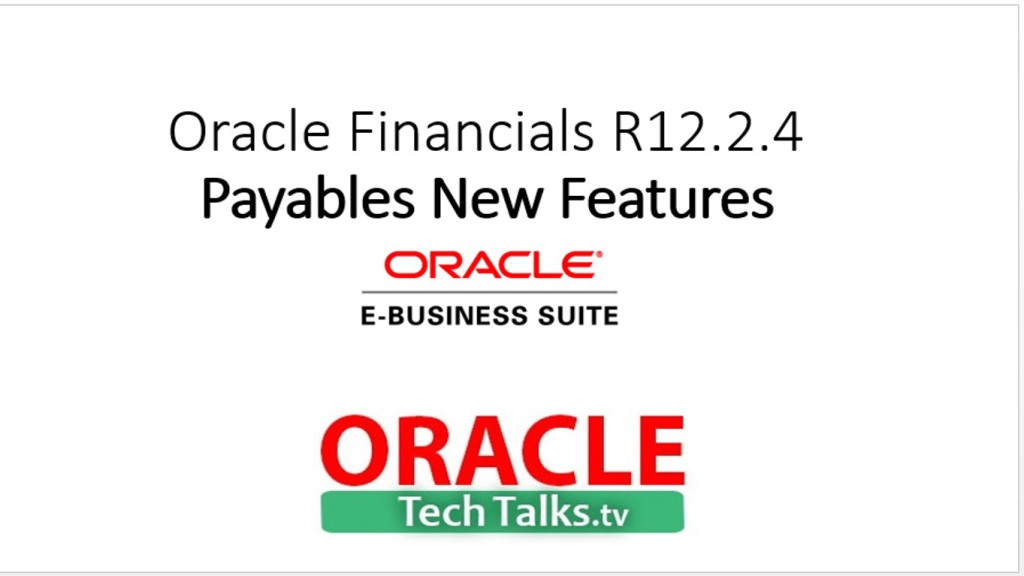Videos
Fear-Setting
Why you should define your fears instead of your goals, a new TedTalk from Tim Ferriss , very good talk and practical steps how to Conquering Fear = Defining Fear in 3 steps. What if I…..? (divide into 3 columns as per below) -Define- -Prevent- -Repair- 1 1 1 2 2 2 3 3 3 […]
Learn About Oracle Chatbots
Chatbot, a computer program to communicate with human beings through text or conversation is coming. The definition of Chatbot as per Wikipedia, in this post, I have got very good  overview on Oracle Chatbots, by Oracle VP of Product Management and Mobile Strategy Suhas Uliyar and Cognizant Sr. Analyst Kevin Benedict discuss four key components of chatbot development and how bots can use mobility platforms. In the discussion, they also touch on customer sentiment analysis, APIs, user personalization, natural language processing, and AI/neural networks.
overview on Oracle Chatbots, by Oracle VP of Product Management and Mobile Strategy Suhas Uliyar and Cognizant Sr. Analyst Kevin Benedict discuss four key components of chatbot development and how bots can use mobility platforms. In the discussion, they also touch on customer sentiment analysis, APIs, user personalization, natural language processing, and AI/neural networks.
Enjoy listing this very informative talk.
Oracle Unified Method (OUM) vs Oracle AIM
Oracle has announced the retirement of Oracle Application Implementation Method (AIM) and any other implementation methodologies as of January 31, 2011.
Oracle Unified Method (OUM) is the single implementation methodology designed to be used for ALL Oracle product implementations.
OUM supports Oracle-based Business Solutions including
- Service-Oriented Architecture (SOA)
- Business Process Management (BPM)
- Enterprise Integration
- Custom Software
- Enterprise Security
- Business Intelligence (BI)
- WebCenter
- Enterprise Application Implementation
- Cloud Application Services Implementation
- Software Upgrade
Oracle Unified Methodology (OUM) – A video tutorial on Oracle Unified Method (OUM) vs Application Implementation Methodology (AIM) This includes definition of OUM, OUM focus areas, implement views like Requirements-Driven Application Implementation or Solution-Driven Application Implementation, and OUM Documents equal to AIM documents like RD050(Gather business requirement), TE040(Test Scripts), BP080(Future Business Model), BR100(Define Application Setup).
Oracle E-Business Suite New Release 12.2.4 Oracle Payables New Features
Oracle E-Business Suite R12.2.4 Oracle Parables has introduced a new feature to send workflow approval notifications in parallel.
Changes in Invoice Approval Workflow have been done. This will allow invoice header level approval cycle to send notifications to all Approvers simultaneously & Will enable to reduce overall approval cycle time.
second change to introduce IBAN field as searchable field, Customer and Supplier bank accounts can be created or searched based on International Bank Account Number (IBAN)
Oracle e-Business Suite R12.2.4 Instance with Oracle VM Virtual Appliances on Oracle VM Virtual Box 3
41 Minutes to build and ready Oracle e-Business Suite R12.2.4 Instance with Oracle VM Virtual Appliances on Oracle VM Virtual Box.
Step by step Guide on installing Oracle EBS R12 on Oracle Virtual box from Oracle VM.
Oracle’s virtual appliances deliver the full software stack, including the Oracle Linux 6.5 operating system, Oracle E-Business Suite R12.2.4, and additional required technology components. These components can be imported very easily into Oracle VM Manager or Oracle VirtualBox to deploy E-Business Suite R12.2.4, Oracle Linux 64-bit environments on compatible server-class machines running Oracle VM Server, or can be imported into Oracle VM VirtualBox to create virtual machines on a desktop PC or laptop. You can do this with minimum Apps DBA skills.
Oracle Receivables New Features of Oracle eBusiness Suite R12.2.4
Oracle e-Business Suite R12.2.4 Oracle Receivables has introduced new feature to Mask Tax Payer Identification and Tax Registration Number
Customers now have the ability to mask both the Taxpayer ID and Tax Registration Number from the Customer Name list of values through a new profile option.
Access to this information can now be restricted or viewable to selected user responsibilities through the
Profile Option: Mask Tax Payer ID and Tax Registration Number
Users visibility can be restricted by selecting one of the three available profile options:
“No Mask”,
“Mask with First Four Digits Visible”
“Mask with Last Four Digits Visible”






